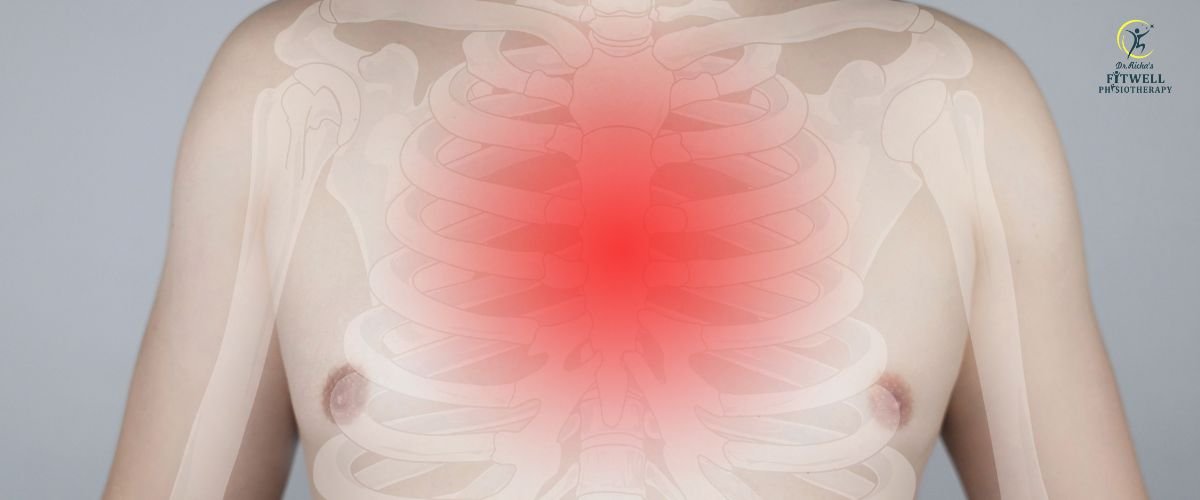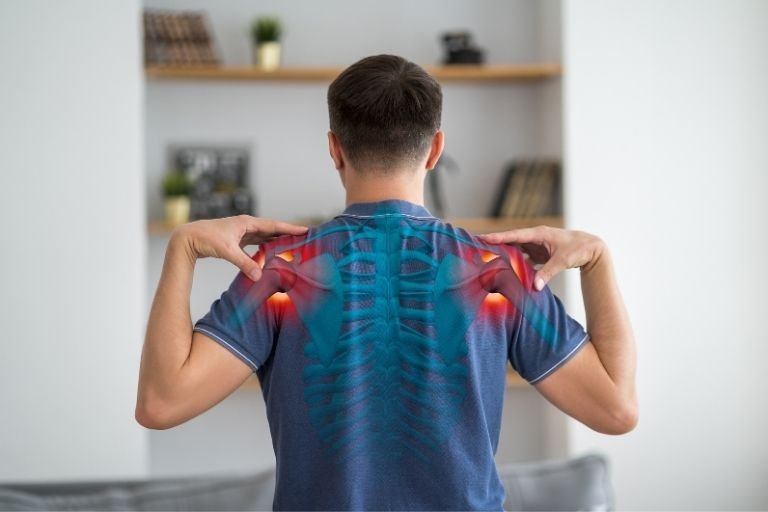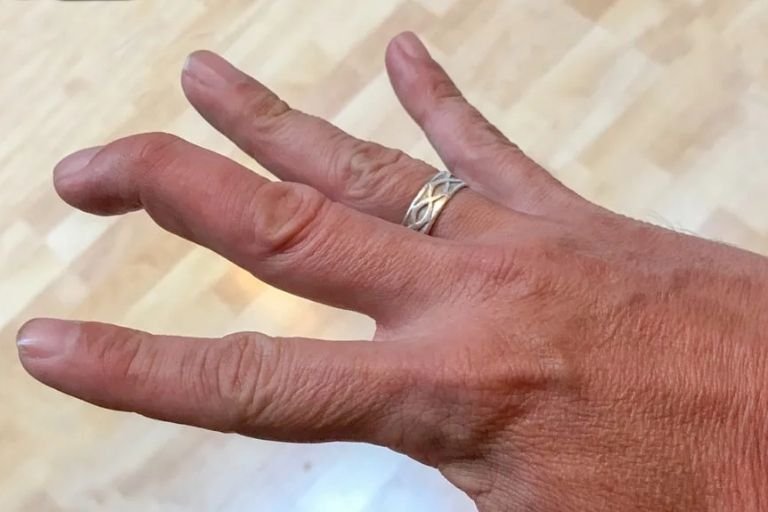- Fitwell Physiotherapy
Thoracic Outlet Syndrome

Thoracic outlet syndrome (TOS) is a condition characterized by compression of the nerves, blood vessels, or both, in the thoracic outlet—a narrow space between the collarbone and the first rib. This compression can lead to various symptoms, ranging from mild discomfort to severe pain and functional limitations. Understanding the symptoms, causes, and appropriate management of TOS is essential for effective treatment.
Please submit your details below.
Symptoms:
Pain: Pain in the neck, shoulder, and arm is a hallmark symptom of TOS. This pain may be sharp, burning, or tingling.
Numbness and Tingling: Patients often experience numbness, tingling, or weakness in the affected arm or hand.
Weakness: Weakness in the arm or hand muscles may occur, making it difficult to perform routine tasks.
Coldness and Color Changes: Some individuals may notice changes in skin color or temperature in the affected arm, with the skin becoming pale or bluish and feeling colder than usual.
Swelling: Swelling in the arm or hand can occur due to impaired blood circulation.
Causes:
Anatomical Variations: Abnormalities in the anatomy of the thoracic outlet, such as an extra rib or tightness of the scalene muscles, can contribute to TOS.
Trauma or Injury: Accidents, repetitive movements, or sudden trauma to the neck or shoulder region can lead to TOS.
Poor Posture: Prolonged poor posture, such as slouching or forward head posture, can increase the risk of developing TOS by putting pressure on the nerves and blood vessels in the thoracic outlet.
When to See a Physiotherapist:
If you experience persistent or worsening symptoms suggestive of TOS, it is advisable to consult a physiotherapist or healthcare professional. Signs such as progressive weakness, loss of sensation, or difficulty performing daily activities warrant prompt evaluation.
Risks:
Untreated TOS can lead to chronic pain, muscle weakness, and functional impairment. In severe cases, it may result in permanent nerve damage or blood vessel complications, such as blood clots or arterial aneurysms.
How to Prevent:
Maintain Good Posture: Practicing proper posture techniques can help reduce strain on the thoracic outlet and prevent TOS.
Stretching and Strengthening Exercises: Regular stretching and strengthening exercises targeting the neck, shoulder, and chest muscles can improve flexibility and prevent muscle imbalances that contribute to TOS.
Ergonomic Modifications: Make ergonomic adjustments to your workstation or daily activities to minimize repetitive strain on the upper body.
Treatments:
Physiotherapy: Physiotherapy plays a central role in managing TOS by addressing muscular imbalances, improving posture, and relieving pain through manual therapy techniques.
Medication: Nonsteroidal anti-inflammatory drugs (NSAIDs) or muscle relaxants may be prescribed to alleviate pain and inflammation associated with TOS.
Activity Modification: Avoiding activities that exacerbate symptoms, such as overhead lifting or prolonged arm abduction, can help prevent further aggravation of TOS.
Surgical Intervention: In severe cases of TOS that do not respond to conservative treatments, surgical decompression of the thoracic outlet may be considered to relieve pressure on the affected nerves and blood vessels.
Overall, early recognition, appropriate management, and lifestyle modifications are crucial in effectively managing thoracic outlet syndrome and improving patients’ quality of life.
Frequently Asked Questions
Related Conditions
How Fitwell Physiotherapy Can Help?
Dr. Richa’s Fitwell physiotherapy has an extensive team of physiotherapists all within their own specialist areas of physiotherapy. Whatever your condition, we guarantee that we will have the best physiotherapist for you. We assess, diagnose, plan, cure and care for you.
Fitwell Physiotherapy Clinic, Pune provides you best physiotherapy treatment in Kharadi, pune. We also serve Chandan Nagar, Vadgaon Sheri, Keshav Nagar, Wagholi & nearby Areas in Pune. We are experts in treating Neck Pain, Hand Pain, Back Pain, Lower Back Pain, Knee Pain, Stiff Neck, Sciatica, Arthritis, Stroke Paralysis & Post Surgical Rehab.
We provide Specialized physiotherapy treatments in Sports Injuries, Pre and post Surgery, Neurologic, Pediatric, Chronic Pain/Fatigue, Rheumatology, Women’s Health, Men’s Health, Ergonomics, Vestibular, Amputees & all sort of Pain treatment and lifestyle conditions.

































































































